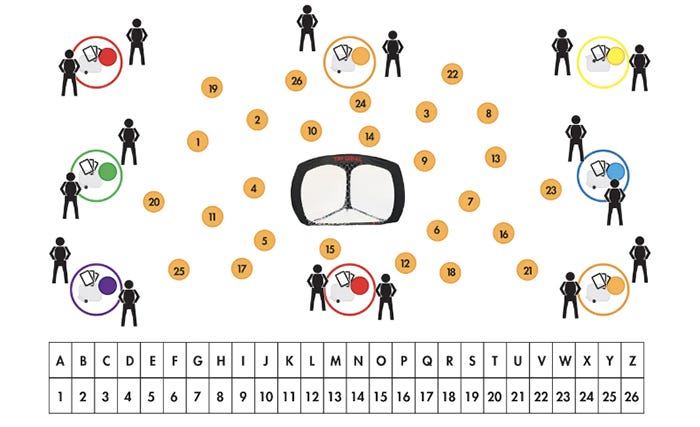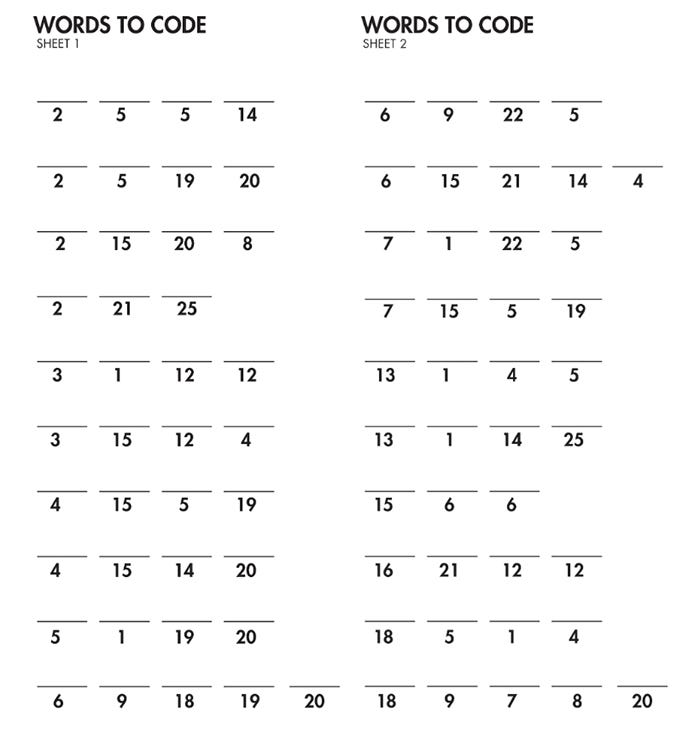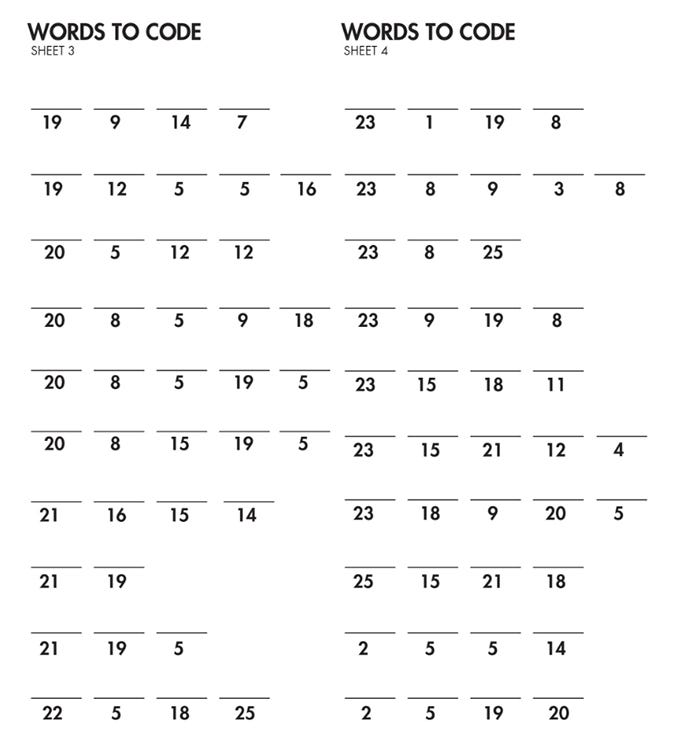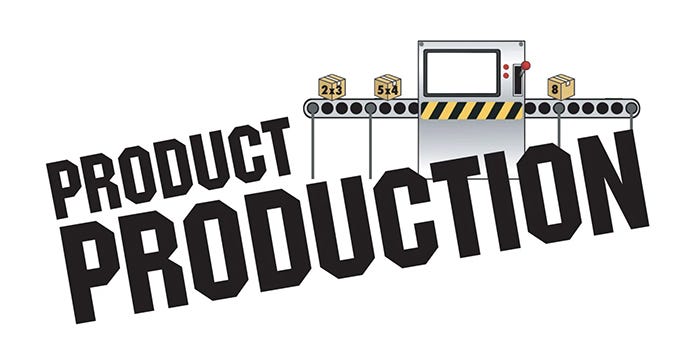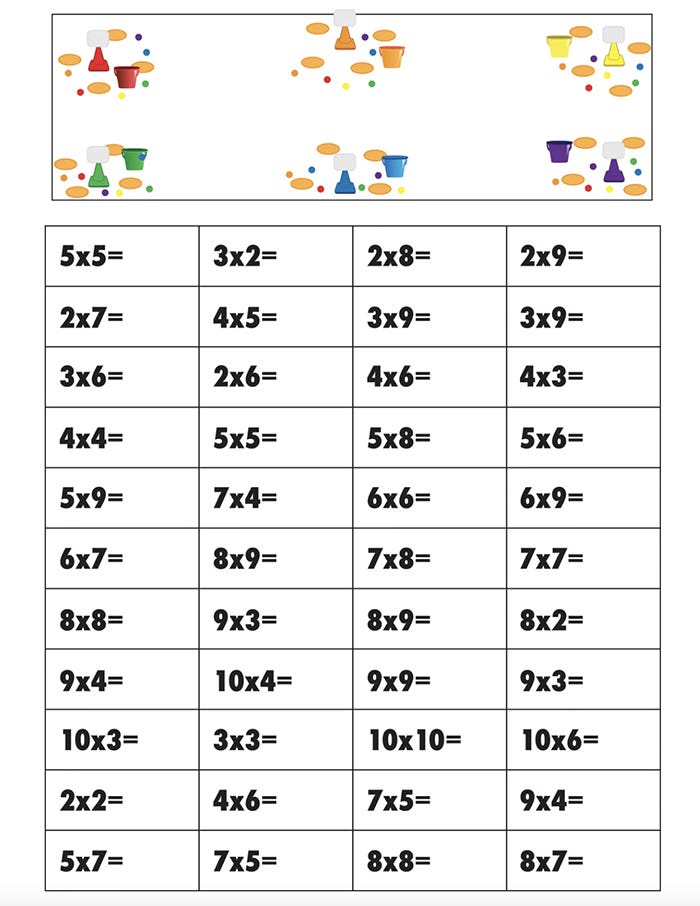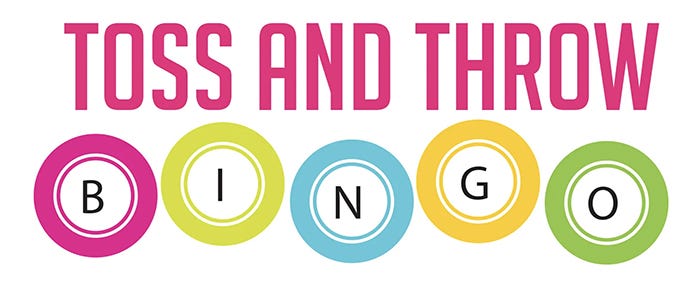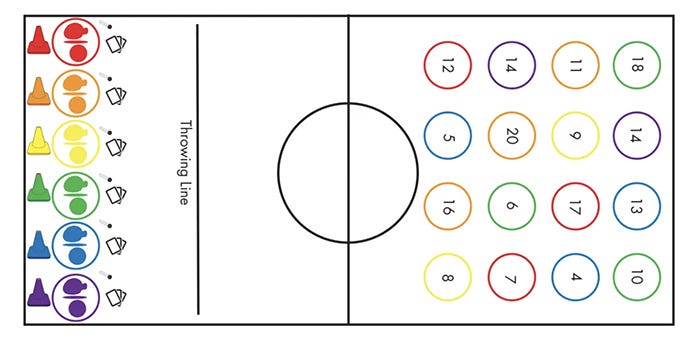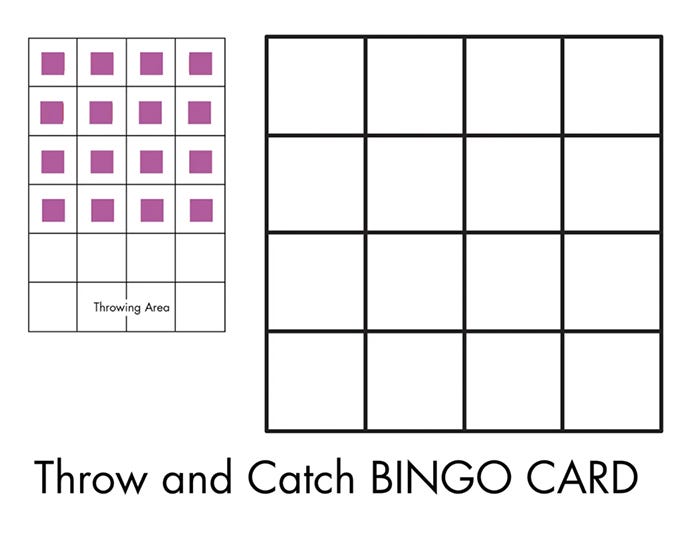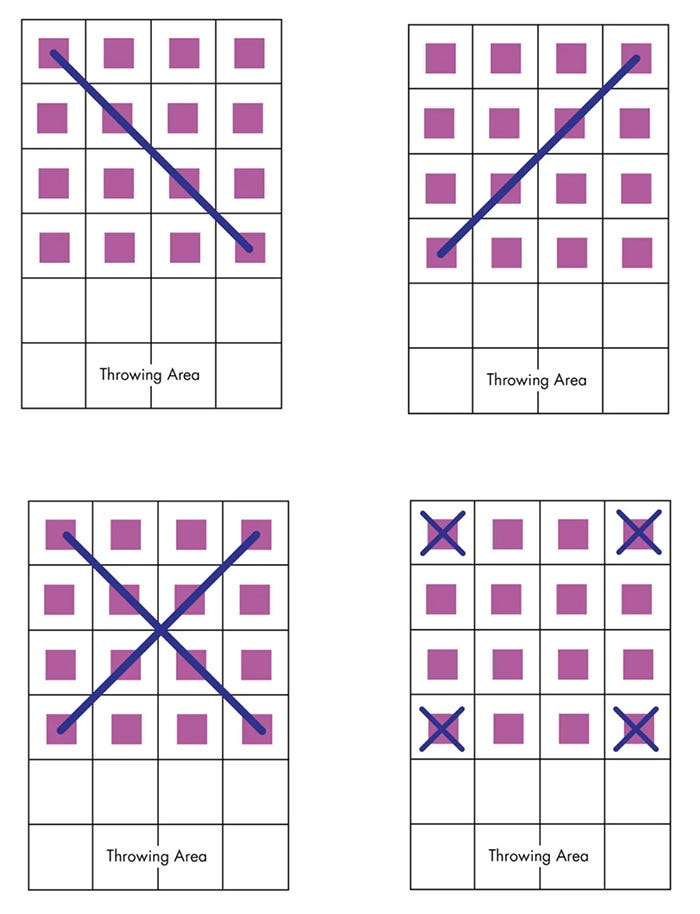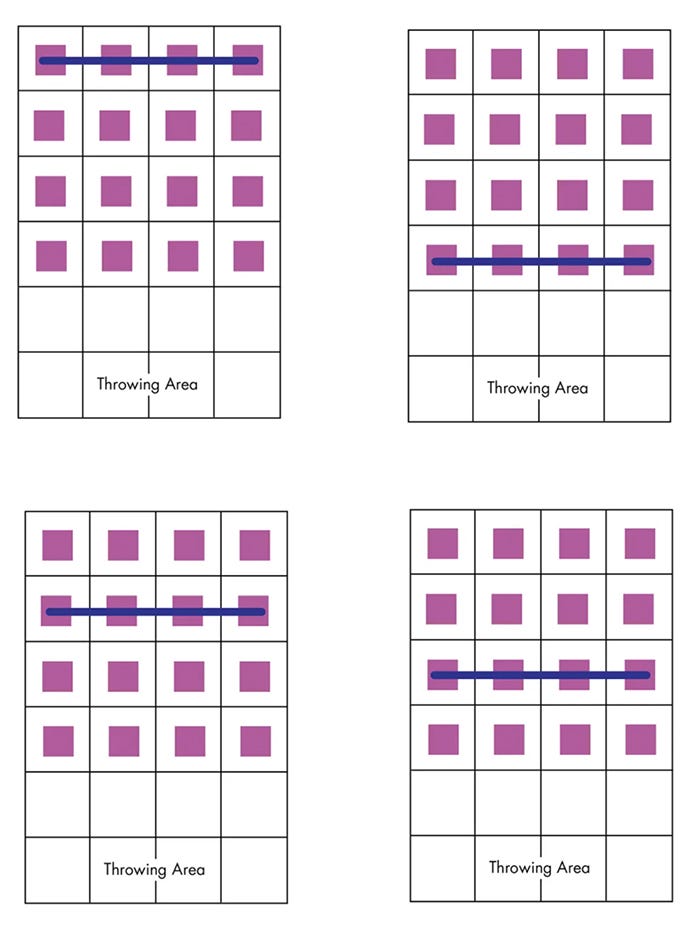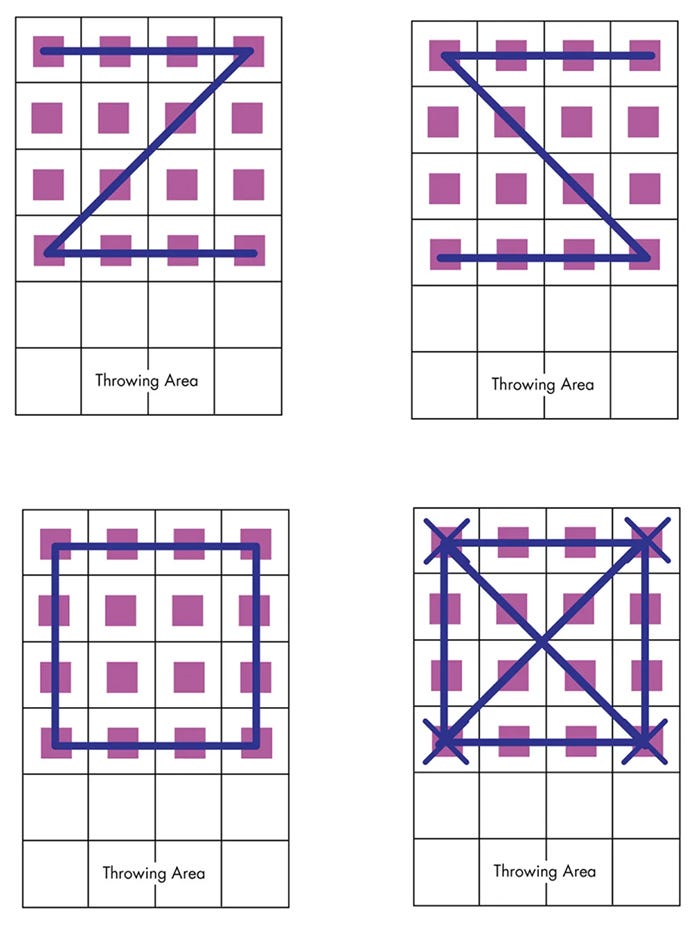Tagged with 'numbered spots'
Break the Code
Be the first to break the code in this find and spell cross curricular game!
Objective:
For students to find the letters to spell a given sight word and earn points for their team using cross
curricular methods.
Grade level:
K-3
Equipment:
Set-up:
Put TriGoal™ in the center of the activity. Scatter the numbered spots around the tri-goal, make sure each spot has a letter on the bottom. Put hoops on the perimeter. In each hoop put a marker-board, marker, a ball, and code sheet.
Rules of the game/safety:
Send two students to each hoop. They should look at the code sheet in their hoop, determine who goes first, and then go to the numbered spot and try and score a goal. If you score a goal, look at the other side of the spot for your letter, and go back to your hoop. Write down the letter you earned. The next person then goes to another spot and tries to earn the next number/letter. Students should watch for personal space when retrieving their ball. If you get through your entire sheet, you can show the teacher, get a new sheet, and a new type of ball to send to goal.
Variations:
- Use sight words, spelling words from classrooms, or sports terminology to spell.
- You could add up the numbers too.
- You could put the balls on the spots to start instead of the hoops.
Posted in
Activities
Product Production
Enhances math and motor skills!
Equipment:
- (6) Colored Cones for each station (61822-PS)
- (6) The Zone™ Cone Toppers (21201-PS)
- (6) White boards for each cone at stations (21202-PS)
- Multiplication charts/problems for each group
- (4 sets) Numbered Poly Spots (1-36) at each station (21149-PS) (21200-PS)
- (6) The Zone™ Buckets for each station to be used as a target (same color as cone) (15607-PS)
- (1 for each station) PALOS™ RUFFSKIN High Bounce Foam Balls (10485-PS)
- Dry erase marker or pencil
Set-up:
- Set Cones up around perimeter of gym or playing area
- Each cone should have a Product(s) written on whiteboard and placed on cone topper. (for example if the products are 12-15, then that is what is written on the whiteboard)
- Numbered poly spots which represent factors for those products are scattered around each large cone. (for example: if the product(s) is 12-15 then numbers such as 2, 3, 4, 5, 6, and 7 would be placed around that cone.
Description of Games:
- Students are grouped in pairs or small groups and are given a ring with multiplication problems.
- Students will work out each problem in order. When they have solved the problem they go to the correct Product, stand on the two factors and attempt to throw into or at target.
- If they successfully hit the target they mark off the problem with a dry erase marker/pencil and move to the next one.
- Students can continuously throw until they have hit the target.
Posted in
Activities
Magic Number Dribble Addition
Reach the Magic Number by adding the numbered poly spots together!
Equipment:
Set-up:
Students divide up into 6 groups and go stand in a line at a hula hoop. Each group gets one ball. Numbered spots are spread out (number side up) in the center of the playing area.
Description of Game:
Before we start, I call out a “magic number” for the round. – this is the number that groups are trying to create by adding the numbered poly spots together. Groups must use a minimum of 3 poly spots that add up to equal the magic number. When the music starts, the first student from each group dribbles out to the center area, picks up one spot, dribbles back to their group, gives the ball to the next student and places the numbered spot in the hoop. Play continues in this fashion until the group has at least 3 spots that (when added together) equal the magic number. After a group wins, have all teams return their spots (# up) in the center of the playing area. Call out a new magic # and play again.
Set-up:
You may have multiple teams win a round. Ex. Magic # is 45. A team could get 21, 20, and a 4. Another team might have 16, 15, and 14. If a number a team needs is not available, they can dribble back to their hoop, take a spot out, dribble it back to the middle and take a new one. Remind students to dribble the ball at all times.
Posted in
Activities
Toss and Throw BINGO
Allows students to work on tossing & throwing for accuracy as well as catching skills and addition!
Objective:
Toss & Throw Bingo allows students to work on tossing & throwing for accuracy as well as catching skills and addition (specifically decomposing numbers).
Grade Level: K-5
Equipment:
Set-up:
- Set colored cones and hoops next to each other across one baseline
- In front of each place index ring of math problems
- Place three different types of throwing manipulatives of choice in each home hoop
- Starting just past the half court line use hula hoops to mark the bingo grid 4×4, spread out generously to take up space reaching to almost the opposite baseline
- Inside of each hoop place a numbered poly spot
Description of Game:
- Divide students into pairs or small groups and place at one baseline spread out next to cone and hula hoop
- Students have a pattern card to follow and must attempt to complete by throwing and catching at the appropriate hoop
- As a successful catch is made, students look down at the number poly spot in the hoop, return to home hoop and mark the box they have caught with a dry erase marker and then remember the number they stood on and each decompose into an addition problem. So if they caught the ball on the number 10, they would each write out a problem that equaled 10 (so 5+5, or 4+6, or 7+3…)
- Students continue taking turns with tossing/throwing & catching until a pattern is complete and then trade the card in for the next pattern. Pattern cards vary in difficulty.
Posted in
Activities




